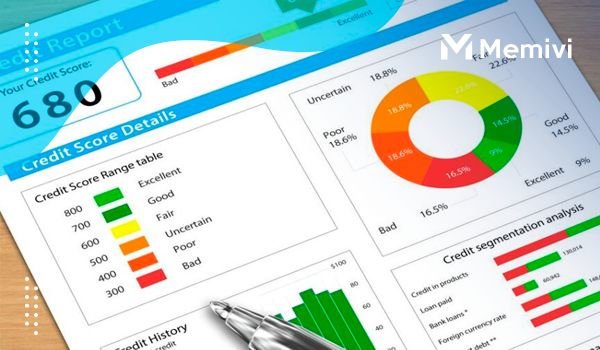
This is a significant change from the previous policy of only allowing consumers to access a free credit report once a year. This move is a response to the COVID-19 pandemic and the financial hardships that many consumers are experiencing. The credit bureaus recognize the importance of staying on top of your credit score, especially during these uncertain times.
In this post, we’ll take a closer look at what this policy change means for consumers, how to access your free weekly credit report, and how to monitor your credit score effectively. If you’re looking to improve your credit score or just want to stay informed about your financial health, keep reading to learn more.
The previous limitations of accessing free credit reports
In the past, consumers faced several limitations when it came to accessing their free credit reports. The major drawback was that they were only entitled to one free report per year from each of the three credit bureaus – Equifax, Experian, and TransUnion.
This meant that individuals had to wait for an entire year before being able to review their credit information again without paying a fee. This limitation posed significant challenges for consumers who wanted to closely monitor their credit health or those who were actively working to improve their credit scores.
It made it difficult to identify and address any errors, discrepancies, or fraudulent activities on their credit reports in a timely manner.
Furthermore, the annual credit report was often provided as a comprehensive document containing information from all three bureaus. While this was helpful in getting a holistic view of one’s credit history, it could also be overwhelming for those who simply wanted to focus on a specific bureau’s report or track changes over time.
These limitations put consumers at a disadvantage, especially considering the importance of maintaining good credit and being aware of any red flags that could impact their financial well-being.
However, in a groundbreaking development, all three credit bureaus have now started offering weekly access to free credit reports.
What this means for consumers and their financial well-being?
The recent development of all three major credit bureaus offering weekly free report access is a significant victory for consumers and their financial well-being. This change has immense implications for individuals seeking to maintain an accurate and up-to-date understanding of their credit history.
Previously, consumers were only entitled to one free credit report per year from each of the credit bureaus. This limitation often left individuals vulnerable to potential errors or fraudulent activities that could impact their creditworthiness. By having access to their credit reports on a weekly basis, consumers can now take more proactive measures to monitor their financial health.
Having this increased frequency of credit report access allows consumers to promptly identify any irregularities, such as unauthorized accounts, incorrect personal information, or signs of identity theft. By detecting and rectifying these issues early on, individuals can mitigate potential damage to their credit scores and financial well-being.
Furthermore, with regular access to their credit reports, consumers can now actively track their progress in improving their creditworthiness over time. This empowers individuals to take control of their financial situation, make informed decisions, and work towards achieving their financial goals.
Step-by-step guide on how to access your weekly free credit reports
Accessing your weekly free credit reports has never been easier, thanks to the recent victory for consumers. Now, all three major credit bureaus – Equifax, Experian, and TransUnion – offer this valuable service. In this step-by-step guide, we will walk you through the process of accessing your reports and taking control of your financial well-being.
Step 1: Visit the official website of any of the three credit bureaus. You can choose to start with the one you prefer or rotate between them every few months to keep track of your credit file consistently.
Step 2: Look for the section on the website that specifically mentions free credit reports. It may be labeled as “Free Credit Report” or “Get My Free Credit Report.” Click on this section to proceed.
Step 3: You will be prompted to provide personal information to verify your identity. This may include your name, address, social security number, and date of birth. It is crucial to ensure that you are on a secure website (look for the lock icon in the browser’s address bar) to protect your sensitive information.
Step 4: Once your identity is verified, you will be able to access your credit report. Take your time to review it carefully, paying attention to any errors or discrepancies that may affect your credit score.
Step 5: If you identify any inaccuracies in your report, take immediate action to dispute them. Each credit bureau has a dispute process in place, which you can usually initiate online. Follow the instructions provided, and provide any supporting documentation to strengthen your case.
Step 6: Remember to repeat this process with the other two credit bureaus to ensure you have a comprehensive view of your credit history.
By accessing your reports regularly, you can stay informed and take proactive measures to improve your creditworthiness. Accessing your weekly free credit reports is a significant milestone for consumers. It empowers you to monitor your credit more frequently, detect potential identity theft, and address any errors promptly. Take advantage of this opportunity and make it a habit to stay on top of your financial health. Your future self will thank you for it.
How to interpret and analyze your credit reports?

Understanding how to interpret and analyze your credit reports is crucial now that all three credit bureaus offer weekly free report access. This newfound accessibility empowers consumers to stay informed about their credit health and take proactive steps towards improving it.
When you first access your credit report, it’s essential to review the personal information section carefully. Ensure that your name, address, and other identifying details are accurate.
Any discrepancies could potentially impact your credit score, so it’s important to address them promptly.
Next, focus on the accounts section, which provides a comprehensive overview of your credit history. Pay close attention to the payment history, outstanding balances, and credit utilization ratio for each account.
Timely payments and low credit utilization are positive indicators of responsible credit management. Keep an eye out for any derogatory marks or negative items, such as late payments, collections, or bankruptcies.
These can significantly impact your credit score and should be addressed promptly. If you identify any inaccuracies or unauthorized accounts, you have the right to dispute them with the credit bureaus.
Final Thoughts
In conclusion, the recent development of all three major credit bureaus offering weekly free report access is undoubtedly a significant victory for consumers. This positive shift empowers individuals to take control of their financial health and stay informed about their credit status on a more frequent basis. It is essential for consumers to seize this opportunity and make the most of this new offering.
Remember, your credit report is a reflection of your financial well-being and can greatly impact your ability to secure loans, obtain favorable interest rates, and even qualify for rental agreements or job opportunities. By staying proactive and regularly accessing your credit reports, you are taking a crucial step towards financial stability and success.
So, let us embrace this victory for consumers and encourage one another to make use of this invaluable resource. Take the time to review your credit reports, understand the information presented, and take action when necessary. By doing so, you are safeguarding your financial future and ensuring that you are on the path to financial freedom.


 Valentine’s Day: The 23+ best Valentine’s Day gifts in 2025 <p class='sec-title' style='line-height: normal; font-weight: normal;font-size: 16px !important; text-align: left;margin-top: 8px;margin-bottom: 0px !important;'> Valentine's Day is approaching, and it's time to find that perfect gift to express your love in 2025. </p>
Valentine’s Day: The 23+ best Valentine’s Day gifts in 2025 <p class='sec-title' style='line-height: normal; font-weight: normal;font-size: 16px !important; text-align: left;margin-top: 8px;margin-bottom: 0px !important;'> Valentine's Day is approaching, and it's time to find that perfect gift to express your love in 2025. </p>  AIibaba AI Qwen 2.5-Max: boost your advertising revenue <p class='sec-title' style='line-height: normal; font-weight: normal;font-size: 16px !important; text-align: left;margin-top: 8px;margin-bottom: 0px !important;'> The digital advertising landscape is transforming rapidly, and AIibaba AI Qwen 2.5-Max stands at the forefront of this revolution. </p>
AIibaba AI Qwen 2.5-Max: boost your advertising revenue <p class='sec-title' style='line-height: normal; font-weight: normal;font-size: 16px !important; text-align: left;margin-top: 8px;margin-bottom: 0px !important;'> The digital advertising landscape is transforming rapidly, and AIibaba AI Qwen 2.5-Max stands at the forefront of this revolution. </p>  AI-based entrepreneurship: The power to change the consumer consciousness <p class='sec-title' style='line-height: normal; font-weight: normal;font-size: 16px !important; text-align: left;margin-top: 8px;margin-bottom: 0px !important;'> In the rapidly evolving landscape of technology, AI-based entrepreneurship stands out as a game-changer. </p>
AI-based entrepreneurship: The power to change the consumer consciousness <p class='sec-title' style='line-height: normal; font-weight: normal;font-size: 16px !important; text-align: left;margin-top: 8px;margin-bottom: 0px !important;'> In the rapidly evolving landscape of technology, AI-based entrepreneurship stands out as a game-changer. </p>